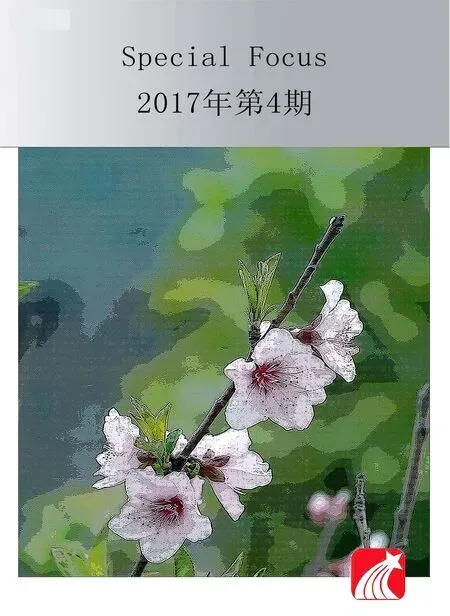第六章:汉口青砖,代代相传
第六章:汉口青砖,代代相传


2006年7月,在中央电视台《鉴宝》节目现场,一块收藏自山西的砖茶拍出15.8万元的天价。
这是一块产自清代,由汉口“天顺兴茶行”销往俄罗斯的砖茶,通体漆黑乌润,其上压有一个凹进去的“川”字,砖面镂刻松树、仙鹤的图案。下面附有俄文“一等品”和产地湖北蒲圻(今赤壁)羊楼洞的标识。
当年的汉口,是全国茶叶集散地,也是中俄万里茶道的源头所在。汉口的青砖茶,是中俄交流的标志之一。

In July 2006, a tea brick from a collection in Shanxi was auctioned on the CCTV program Treasure Appraisal, and sold for the hefty sum of RMB 158,000.
This tea brick, produced in the Qing Dynasty and sold to Russia by Tianshunxing Tea Company, was pitch black through and through, and recessed into the face of it was the Chinese character川 which stands for “river”, along with carved images of evergreens and cranes. Directly under it, there was the Russian word for “grade A”in Cyrillic characters alongside the place of origin, Yangloudong in Puqi City (modern day Chibi) of Hubei Province.
In the past, Hankou was the center of tea distribution in China, as well as the origin of the Sino-Russo Tea Road. Hankou black brick tea was a symbol of Sino-Russian cultural exchanges.
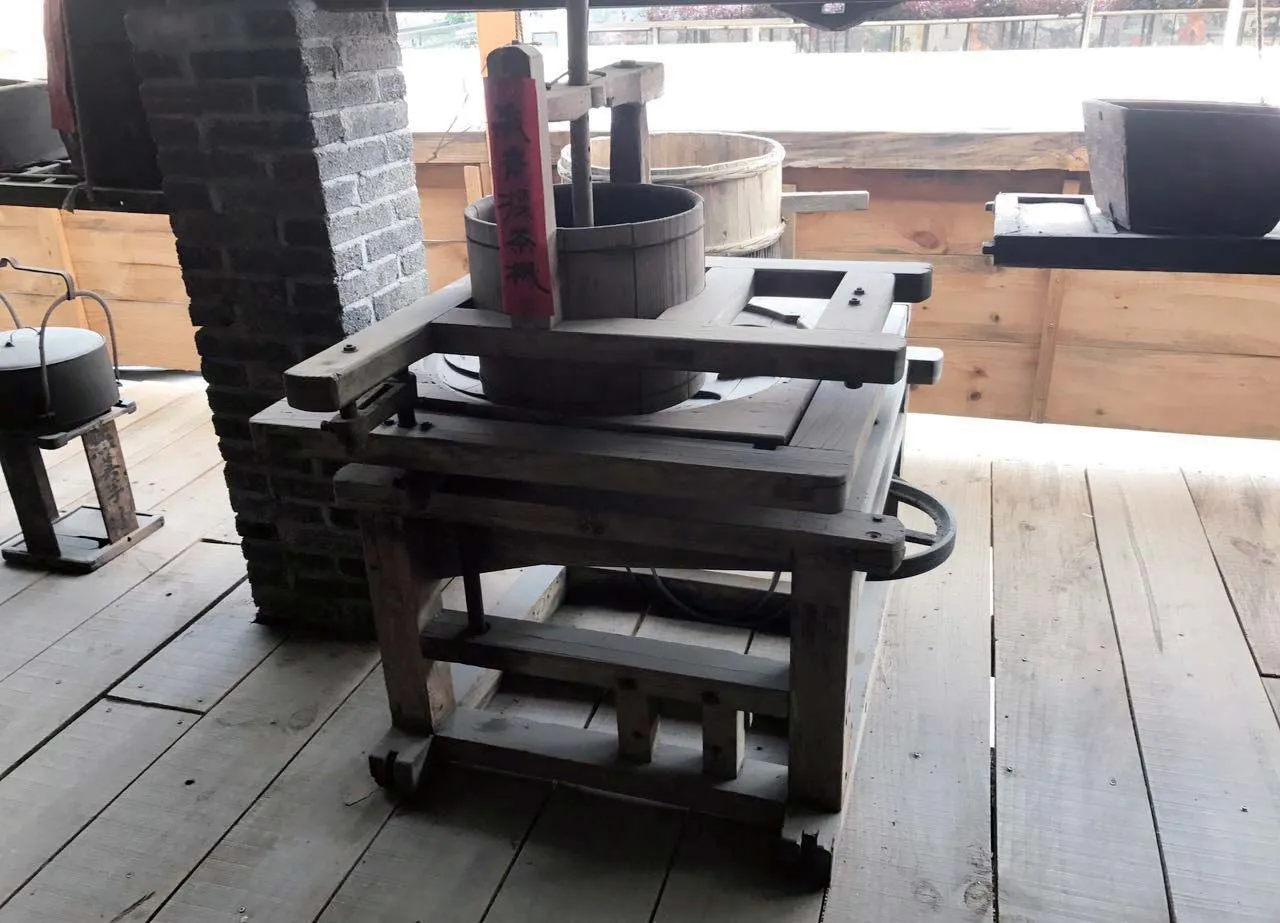
▲近代茶农用来杀青的工具 Utensil for tea fixation used by tea farmers
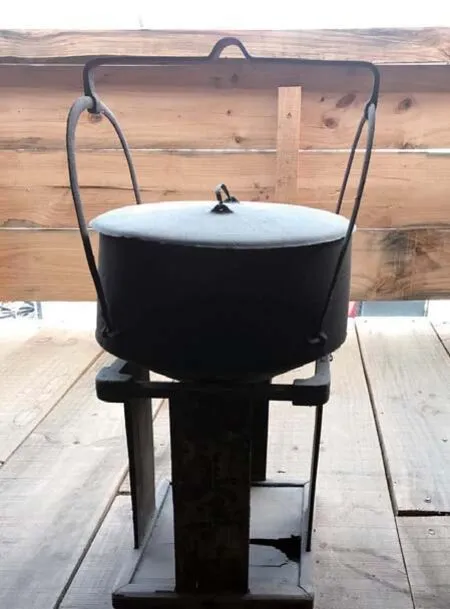
▲煮茶工具 Utensil for Tea Making
19世纪下半叶,俄国国内鼓吹“东进”的沙文主义情绪甚嚣尘上。在国内“东方派”的鼓动下,沙皇亚历山大三世做出两项重大决策:一是1886年提出修建西伯利亚大铁路;其二,出于以后太子的政治发展需要,让已经成年的皇太子,远东旅行。
这位年仅22岁的俄皇太子和他最好的朋友希腊王储格奥尔基以及随员,组成了一个30人的“旅游团”。
1890年11月,他们从冰雪覆盖的彼得堡出发,开始了一次横跨欧亚两大洲的长途旅行。次年4月1日,俄皇太子一行抵达香港。4月8日,一行人由广州直下汉口。
当时,中国清政府以李鸿章等为代表的一派,主张“以夷制夷”,极力鼓吹清政府对俄皇太子妥为招待。
4月20日,一艘俄国船只驶抵汉口码头,船上载着远道而来的俄皇太子一行。此前,湖广总督张之洞收到总理衙门指示“优加款待”,遂立即决定,在省城外塘角防营边建造东西牌楼。
据史料记载,当时租界各华商兴致勃勃,在码头上搭盖西式方亭,中央高悬俄国国旗,四周悬英美德法各国国旗。马路两边皆立白色木竿,拉上丝绳,上悬彩灯。西商各自备办各式彩棚,武汉平民百姓结队往来参观者不绝于道,热议纷纷。
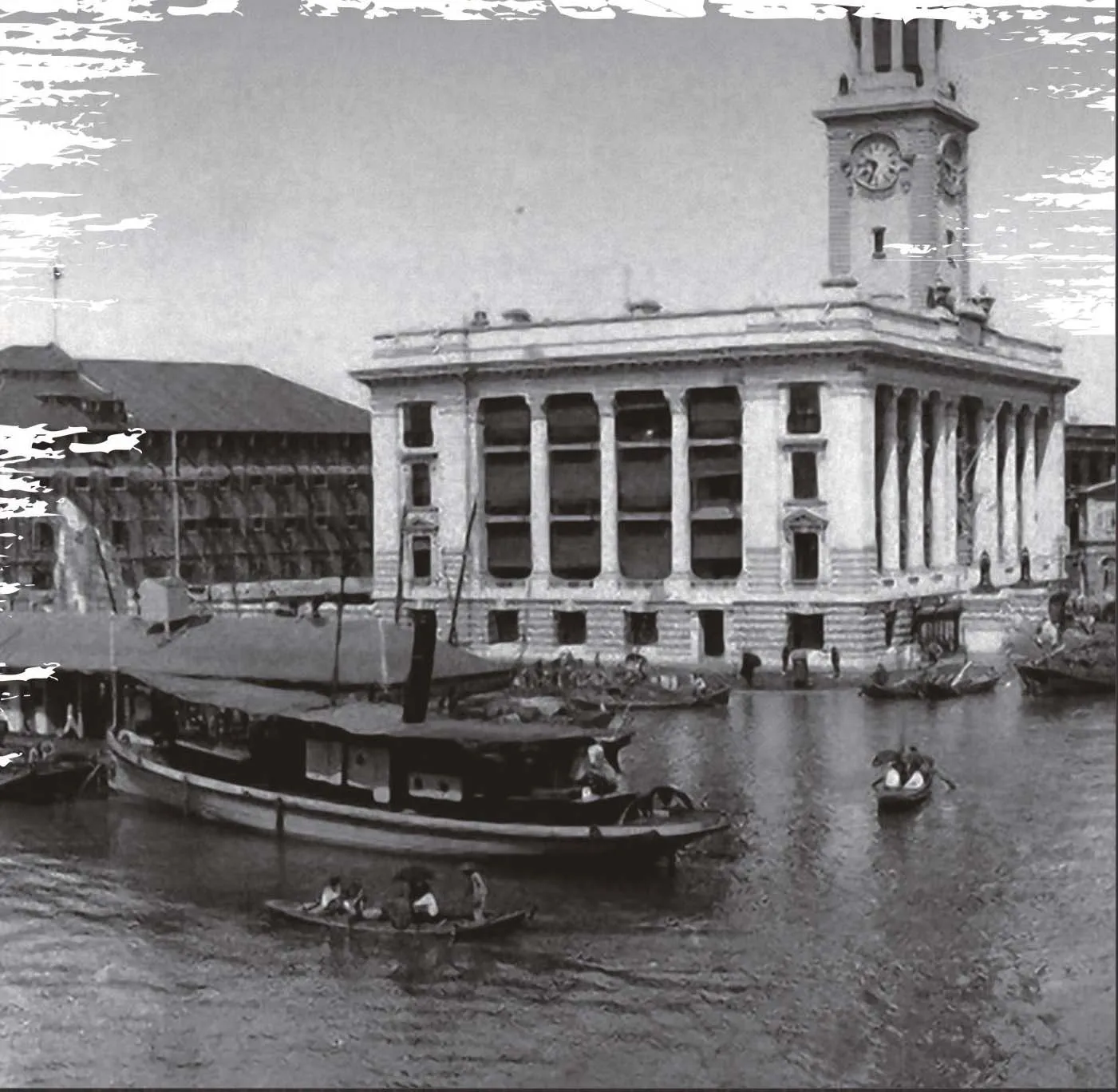

▲李鸿章 Li Hongzhang, senior official of the late Qing Dynasty
The drums of Chauvinistic “Eastward Expansion”beat a loud and fierce cacophony in Tsarist Russia in the second half of the 19th century. Meanwhile in China, drums were beating out a rhythmic march towards “Orientalism.” Tsar Alexander III made two important decisions: First, in 1886 he proposed the construction of Trans-Siberian Railway; the second was to have the Russian prince, who had reached adulthood, travel to the Orient, viewing it as a necessary step for his political maturity.
The youthful 22-year old Russian prince, his best friend crown prince Georgei of Greece and his followers, constituted a 30-member touring group.
In November 1890, they departed snow-covered St. Petersburg, and set off on a long journey across Europe and Asia. The Russian prince and his entourage touched down in Hong Kong on April 1st the ensuing year. On April 8th they went to Hankou directly from Guangzhou.
At that time, Li Hongzhang, a senior government official of the Qing Dynasty adhered to the policy of“playing one power against another,” while at the same time, utilizing Western science and technology to fight off imperialist expansion into China. Hence, he advocated strongly that the Russian prince should be greeted with hospitality.
A Russian ship carrying the delegation members reached the Hankou docks on April 20th. Before that, Governor Zhang Zhidong of Hunan and Hubei had received an instruction from the Ministry of Foreign Affairs which indicated “to regale and delight,” so he immediately decided to construct traditional Chinese style decorative archways on the east and west sides of the Tangjiao Garrison outside Wuchang city walls.
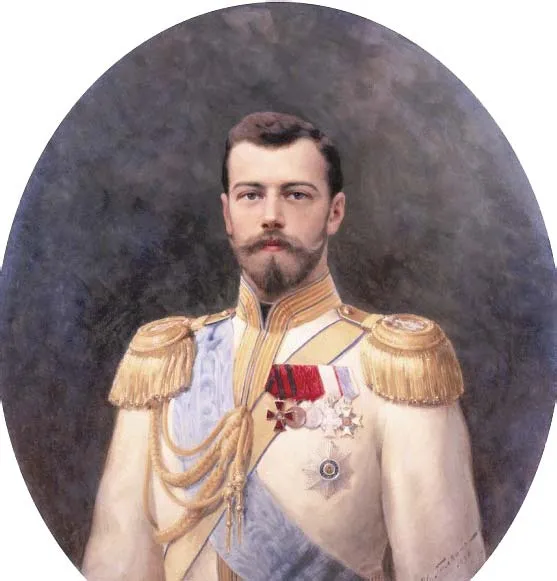
▲俄皇太子 Russian Prince
According to historical records, the Chinese merchants in the Concession area at that time were all for building a western-style pavilion at the harbor. A Russian national flag hung high at the top of the pavilion, and British, American, German and French national flags surrounded it. White wooden poles were erected on both sides of the road, with the ropes between decorated with colorful lights. The Western merchants prepared all kinds of decorated marquees, while Wuhan locals turned out in droves for their chance to catch a glimpse of the spectacle. Group after group of them streamed in, jamming the highways and byways.

▲希腊亲王格奥尔基和沙俄皇储尼古拉Crown Prince Georgei of Greece and Crown Prince Nicolas of Russia

▲汉口租界 Hankou Concession
张之洞亲率9只轮船迎接,仪仗队鸣放礼炮,钟鼓楼中鼓乐齐鸣。俄皇太子“头戴白冠,上缀鸟羽,约尺许长,身穿金绣红衣外罩,湖色灰鼠大衣”,由中国乐队开道,缓步而行。
一行人上岸后换乘黄缎圆式金顶轿,行至晴川阁,张之洞盛宴接待俄皇太子。席间,张之洞以新泰砖茶厂特别制作的一款纪念砖茶,作为国礼赠予皇太子。皇太子笑纳,不远万里带回俄罗斯。
这块有着特殊意义的砖茶,至今仍收藏在莫斯科博物馆。据老照片显示,砖茶最上面是两排俄文,分别为“皇室殿下”和“国家继承人”;中部压制的图饰为皇冠,皇冠下面是纹饰及图案;下部压制有三排俄文,译成中文分别为“汉口,1891年4月9日”、“工厂”和“托克马可夫、莫洛托可夫和公司”。砖茶背面压则制有圣彼得堡的市徽图案及阿拉伯数字“25”。张之洞之所以如此盛情款待俄皇太子,除了两国交好的程序礼节外,另一个重要的原因就是力促以汉口为起源的华俄茶叶贸易。
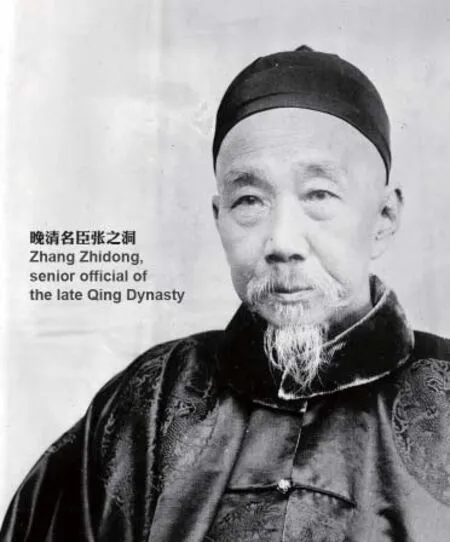
当时,皇太子的表兄J·K·巴诺夫在汉口开办阜昌砖茶厂。次日,二人在新泰砖茶厂25周年厂庆上相逢。巴诺夫向皇太子讲述他在汉口的茶叶贸易经历,激动之处,他对汉口优越的地理位置,便利的交通条件盛赞不已。
皇太子兴味盎然,即兴致辞:“万里茶路是伟大的中俄茶叶之路,在汉口的俄国茶商是伟大的商人,汉口是伟大的东方茶港。”从此,“东方茶港”这个名称在俄国茶商中流传开来。

▲江汉路街景 Jianghan Street in Hankou during the Republic of China (1912-1949)
After the posse reached the shore, the prince got into a rounded yellow satin palanquin and was whisked off to Qingchuan Pavilion. Zhang Zhidong had a feast prepared to welcome the Russian prince. Zhang presented him with a commemorative tea brick specially made by Xintai Tea Factory as a gift on behalf of the nation. The prince received it and took it back to Russia with him.
To this day, this special block of compressed tea is kept in the Moscow Museum. Old photos show that there are two lines in Cyrillic written on the top of the tea brick which read, “royal highness,” and“state heir.” In the middle part, there is the symbol of a crown pressed in it, and below are three lines in Cyrillic, which can be translated into, “Hankou April 9, 1891,” “Factory” and “Tokmakov, Molotokov and Company.” The city emblem of St. Petersburg and the number 25 in Arabic numerals are pressed into the back of it.
Zhang Zhidong treated the Russian prince to such elaborate festivities not just for the sake of diplomatic etiquette, but also to promote the tea trade between China and Russia, and to ensure that Hankou should become the epicenter of it all.
At that time, J. K. Baranov, the prince’s cousin, initiated the erection of Fuchang Brick Tea Factory in Hankou. The next day, they met at Xintai Tea Factory, which was celebrating its 25th anniversary. Baranov described his tea trade experience in Hankou to the prince, highly praising the convenient location and transportation.
The prince didn’t attempt to conceal his interest, breaking into an impromptu speech, “The Sino-Russo Tea Road is a great and noble tea trading route, the Russian merchants in Hankou are splendid, and Hankou is an exceptional Oriental tea port.” From that moment on, its name and reputation spread like wildfire.

▲张岳峰请俄方代表亚历山大·伊利因先生将独制黄鹤楼青砖茶转赠普京总统Zhang Yuefeng presents a tea brick as a gift to Alexander Ilyin, a Russian envoy
中俄茶叶贸易往来密切,张之洞开始重视制茶之法。1894年,张之洞由“茶厘”项下垫拨洋例银7000多两,责成江汉关道,将上等红茶200箱运到当年俄国的敖德萨(今乌克兰城市);又委托顺丰砖茶厂将100多箱红茶远销圣彼得堡;指导汉口茶商选办上等红茶数百箱,名为“总督茶”,从水陆两路直销俄国。
茶务在张之洞心目中不仅“关系两湖商民生计”,更直接“关系南北两省商务大局”。他敏锐认识到,公司制及机器制茶是振兴茶业的根本出路。1897年汉口已出现机器焙茶工厂,同年张之洞即着手“合各富商之力纠股设厂,延请洋人督率教导”,筹办两湖制茶公司,公司的成立在当时反响巨大。1898年,张之洞开办汉口机器焙茶公司。
张之洞重视茶贸并创“总督茶”从汉口直销俄国,为汉口作为“万里茶路”的源头书写极为重要的一笔。汉口,积淀了丰厚的茶文化,在中国茶叶史上写下瑰丽华章。直到现在,在中俄两国交流中,汉口青砖茶仍扮演着重要角色。
2014年11月5日,中俄万里茶道学术研究会上,武汉茶叶协会会长张岳峰代表湖北茶人,请俄罗斯“伟大的万里茶路”研究会会长亚历山大·伊利因,代为将一块青砖茶转赠普京总统。
这块砖茶长29.7厘米,宽21厘米,厚2厘米,重1500克。砖茶中间有黄鹤楼图案,下面有凸起的“俄罗斯总统普京阁下惠存”字样。砖茶放置在一个特制的茶屏里,茶屏系红木精雕细琢,古朴厚重。
11月13日,亚历山大·伊利因收到俄罗斯总统办公厅收到该砖茶的回函。回函说:“您转赠俄罗斯总统的中国精品砖茶,已由总统办公厅公民接待处接收。现向您通知,我们一定会将您指定的礼物随信一同转交总统。”
赠茶同年,武汉黄鹤楼茶叶公司与莫斯科菲尼克斯茶叶公司,签下1.5亿元的汉口砖茶订单,重启中俄茶叶贸易,中国茶将重新香飘俄罗斯。

▲顺丰砖茶厂旧址 Former site of Shunfeng Brick Tea Factory
Since China and Russia maintained a close relationship in the tea trade, Zhang Zhidong began to pay special attention to tea administration. In 1894, Zhang appropriated more than 7,000 Hankow taels from tea tax and ordered Jianghan Customs House to deliver 200 boxes of fine black tea to Russia’s Odessa (now a city in Ukraine). He commissioned Shunfeng Brick Tea Factory to export 100 boxes of black tea to Saint Petersburg. Guided by Zhang, Hankou tea merchants selected hundreds of boxes of premium black tea representing the acme of quality from their stores, which was dubbed,“Viceroy Tea,” and transported them over land and sea for direct sale to Russia.
In Zhang’s eyes, tea affairs did not just represent“the livelihoods of merchants from Hunan and Hubei,” but represented “the general business prospects of the two provinces.” He keenly observed that smart company management systems and mechanized tea making were the fundamental ways to revitalize the tea industry. Mechanized tea roasting factories had already appeared in Hankou in 1897. The same year, Zhang Zhidong set about“yoking the financial power of wealthy investors and selling shares to set up factories, and beseeching foreigners to instruct and supervise.” Thus, the Hunan-Hubei Tea Company was founded, which at the time generated enormous buzz. In 1898, Zhang set up the Hankou Mechanized Tea Roasting Company.
Zhang Zhidong took the tea trade very seriously, a n d d e v elo p e d“Viceroy Tea” that was exported to Russia directly from Hankou, which was quite critical in turning Hankou to the starting point of the “Sino-Russo Tea Road.” A magnificent chapter in Chinese tea history has been written in Hankou, a place with rich tea culture accumulated over many generations. Even now, Hankou black brick tea still plays an important role in Sino-Russian exchanges.
On November 5th, 2014, at Sino-Russo Tea Road Seminar, Zhang Yuefeng, the president of Wuhan Tea Association, who represents tea experts in Hubei, asked Mr. Alexander Ilyin, the director of Russian “Grand Tea Road” Research Association to present a tea brick to President Putin as a gift.
The gifted tea brick is 29.7 centimeters long, 21 centimeters wide and 2 centimeters thick, weighing 1500 grams. At the center is the insignia of the Yellow Crane Tower, and at the bottom in raised Chinese characters, “Honored President Putin, please accept this tea cake as our humble token.” The tea brick was put on a specially made display shelf made of mahogany and finely carved to look antique and decorative.
On November 13th, after the tea gift and letter had been received by Russian President’s office, Alexander Ilyin responded in turn with a letter which read, “Your gift of premium Chinese brick tea has been received by the office of the President; this letter is to inform you that we will forward the gift along with the letter to the President himself.”
In the same year, the Wuhan Yellow Crane Tower Tea Co., Ltd. signed a contract worth RMB 150 million with the Moscow Phoenix Tea Company to restart the tea trade between China and Russia. The sweet aroma of high-class Chinese tea will be enjoyed in Russia once again.
Chapter 6: Hankou Black Brick Tea, Passed on from Tea Tree to Family Tree
dong warmly
them with nine ships at the dock, honoring them with 21 gun salutes, meanwhile, a band played at the bell and drum tower. The Russian prince was attired in a white crown adorned with genuine one-foot long bird feathers, as well as a red coat with gold embroidery and a turquoise chinchilla coat. The Prince paced slowly and deliberately through the space the band cleared for him on the road.
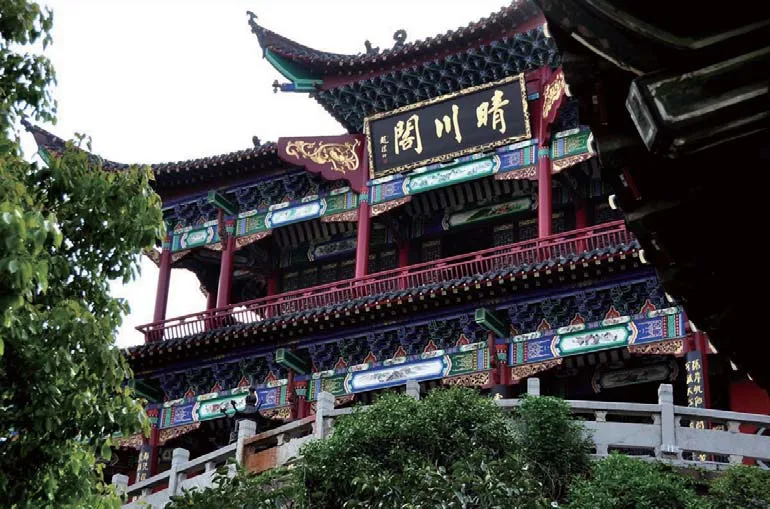
▲晴川阁 Qingchuan Pavilion

